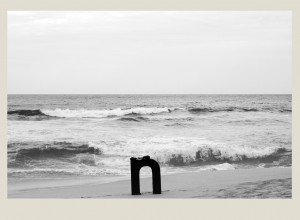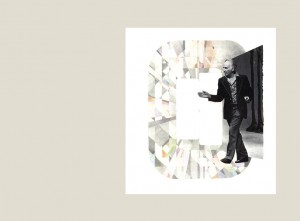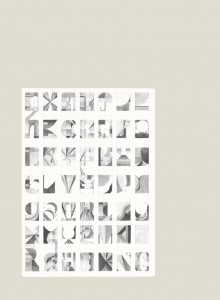The terror of n: Belle Bassin
In both style and content Belle Bassin’s recent solo exhibition, The terror of n, has a strong resonance with the work of 19th-century spiritualist artist Hilma af Klint. Both artists employ geometric abstraction, meticulous grid work and esoteric symbology that belie the formality, order and control implied by such approaches, instead quietly moving toward an unknown coda and potentiality that suggests a sort of transcendence.
Theosophy refers to systems of speculation or investigation seeking direct knowledge of the mysteries of being and nature. John Golding called theosophy ‘a world of vast, intangible and amorphous ideas’. In a sense, both artists attempt to portray enigmatic elements of parallel and invisible realms. Af Klint was considered a clairvoyant, claiming that her work was guided through a psychic connection on another plane. While Bassin’s work may not have been created in this way, it certainly speaks (albeit mutely) to interpretations and connections with and of multiple dimensions.
Nostalgia pervades Bassin’s work. There is a graphic sensibility that recalls the era of psychedelia and esotericism. In particular, The terror of n is reminiscent of a Luis Buñel film from the ’60s; the spectral O is a potential gateway to an elsewhere in which a gentleman appears as a sort of guide, cut from the books of another era. The work’s paradox implies a vacuum; the suspension of time and suggestion of movement.
Bassin’s work is an exploration of semiotics. The idea of mute language—a forever not quite narrative—is a central theme. Obscured movement and the frozen gesture reinforce the idea of semantic flux. The artist has created a world of limbo and potential where symbols are at once more than what they seem, yet not quite what they appear to be. Complicit font, an almost-alphabet of pictograms, seductively plays with this notion.
The exhibition itself is a tableau that simultaneously diverges and digresses to create a multitude of possibilities. In this way Bassin inspires the need for an interpretation but then disables one. It is precisely this disruption of flow that enables the viewer to search for a new one.
Belle Bassin, The terror of n, Fehily Contemporary, Melbourne, 9 February – 3 March 2012.


